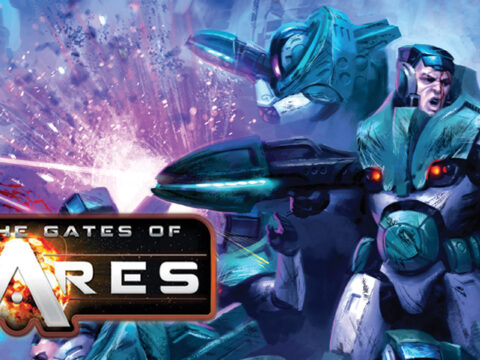For the third installment looking at Warlorder Rich.D’s Freeborn Feral force, Rich talks us through the processes he used when creating their home world – Pellemar…
In case you missed the previous articles on building the army, take a look here and here
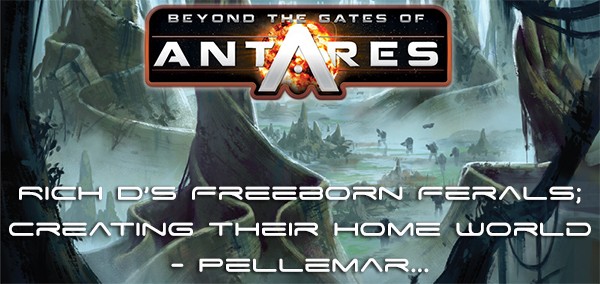
As well as chopping-up all manner of Warlord models and re-purposing them for my own wicked needs, I’ve also been working on their backstory a little… What’s great for me about Beyond the Gates of Antares is that it’s such a new game, a brand new universe, and a blank canvas upon which to let my imagination run wild… I’ve always enjoyed writing, and have always written extensive notes and backstory for a whole bunch of wargames armies/warbands/collections in the past – and the Ferals would be no exception!
Below, I’ve submitted a few initial notes to give some context to the force – interspersed by a few pics of the first painted models (Yes – you read that correctly – a large chunk of the force are now painted!)
Pellemar is a world which has long been blighted by war – as it not only lies on the border of C3 and Algoryn territory, but in a sector which is also frequented by the Ghar, and other races as yet unidentified… the planet’s surface bears the unmistakable scars of generations of conflict – decomposing wrecks of the machines of war still lie strewn across great areas – and vast impact craters lie where huge expanses of dirt have been displaced by cataclysmic explosions – both by the effects of war, and from the effects of meteor rains.
Huge craters punctuate the planet’s surface – peppered with visual reminders of these long forgotten astral visitors – meteorites which landed here many generations ago… raining down from orbit in a fiery vision of damnation.
The planet’s orbital path and relative position within the Ushubu star-field mean that it sees prolonged periods of meteoric activity. Once every few generations, it will suffer the wrath of a huge meteoric cluster rushing within a whisker of it… with many being drawn into a collision course with Pellemar itself.
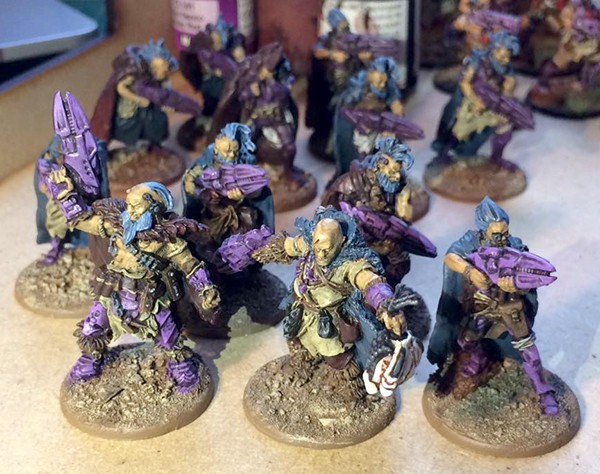
The planet has however lately experienced an uncharacterful period of peace – the Concord and Algoryn’s attention seems to have wandered, and the planetary cycles have been favorable – Pellemar’s orbit has swung away from the meteor fields. Therefor, the planet’s native vegetation has had 4 generations of relative peace to heal, to thrive, and to re-claim the planet.
Layer-upon-layer of dense canopies shroud much of the planet’s surface from sunlight – so there is little in the way of ground-hugging plant-life. The majority of foliage is sits up high. Several of the lower canopies have also begun to further adapt and evolve to suit their environment – having mutated their photogenetic cells to photosynthesise light from elsewhere on the UV spectrum – lessening their dependency upon sunlight.
Up above the vegetation, the troposphere is criss-crossed with huge spore-trails – like modern-day jet-trails, but larger… and varying massively in colour and transparency… some are barely visible – just traces… others take the form of great noxious clouds which almost entirely obscure the sky – blocking-out the light from the nearby Nexus.
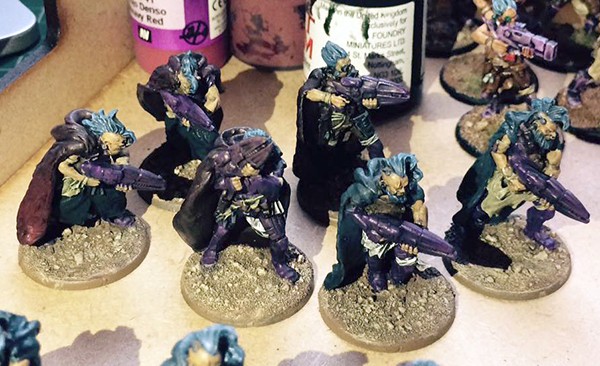
Countless generations ago, there were Builders here… and the planet still bears many reminders of their presence – shaped stones and monuments standing as physical echoes of their being here. Monoliths and pillars, strange formations – their purpose and function forgotten to the ages…
The native elders tell tall tales, claiming to know their purpose… many of their tales contradicting and conflicting one another… however, there are a number of common themes which you’ll hear – the stone structures seem imbued with a strange energy – and are said to glow at certain points/cycles of the planet’s orbit – or perhaps when certain arrangements of stones align with specific nearby orbiting bodies – and when they are bathed in the light from a specific distant star, the stones themselves seem to come to life – singing, reverberating with an audible droning resonance….

In visual terms – the planet is covered in a vast sprawling layer of largely uninterrupted fauna, with occasional clearings around pools of an as-yet unidentified liquid – which are connected by winding river channels, and occasional tracks/trails (which themselves are dotted with traps and ambush points.)
Another of the distinctive topographic features would be the gas-flows – similar to what we know as rivers, but rather than liquid, it’s a flow or heavier-than-air gases – dangerous, noxious currents which are to be avoided. They settle into channels, and flow downhill. Slow-moving, their flows vary depending upon the season, the planet’s proximity to it’s three moons, and upon other environmental factors – when in heavy flow, they create an impassable barrier of deadly poison. The gases emerge from deep within the planet’s core – appearing through cracks created following seismic quakes, snaking across the landscape and eventually run back into the planet through further holes and crevices.

The planet was long thought to be uninhabited, as no real sign of habitation or the wider impact of man could be sighted from above… however, the IMTel first grew suspicious of some kind of activity when a number of it’s survey drones went missing under mysterious circumstances – displaying anomalous and unexplainable flight path data in the moments before going offline, never to be heard from again.
Further cartographic research missions by the C3 revealed the first points of interest upon the surface – the standing stone formation at location which has come to be designated ‘X-42.’
With further exploration, the planet revealed a number of further peculiarities which served to heighten IMTel curiosity.
Across the planet’s surface, it seems to demonstrate a number of Gravitational anomalies – some form of grav-shift and temporary gravitational pulses…. in some regions, the planet seems to ‘suck’ spacecraft down to crash upon its surface…. and in other pockets (typically on a smaller scale,) some areas experience a longer-term anti-grav effect – with floating rocks and islands – which only remain connected to the planet’s surface by great vines.
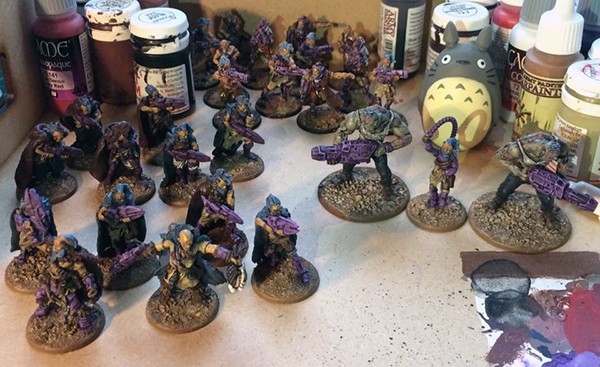
A number of stone structures have been identified upon the planet’s surface – though little else in the way of man-made structures has been located at this time.
Arrangements of up-standing stones – monoliths, perhaps?… pillars? totems?…. it is unclear of their exact purpose – are they way-stones, markers, or perhaps they have some form of higher spiritual purpose for the planet’s inhabitants?
Some stand alone, solitary markers perhaps – others are arranged in large circular formations – while others are arranged upon one another – stacked or carefully balanced. They do not appear to have been built for shelter – their arrangements do not baffle the wind or give refuge from the rains- there is some other such meaning behind their being here…
Some stand just a foot or two tall, and could easily be mistaken for naturally occurring rocks or boulders – but closer inspection reveals that they have been carefully and purposefully placed. Others stand on end – many dozens of metres high – solitary stone sentinels which rise into the hazy skies. Others lie in formation – their position carefully calculated and arranged to interact with others in the area somehow.Is this a method of tracking the nearby star formations? Mapping the region perhaps? Charting the movements of the stars? We do not yet know.
Some have toppled – fallen victim to the weather. Some have stood in place for many generations and – thanks to the richness of the environment/air – have become overgrown by the planet’s rich flora – vines, mosses and lichens covering every facing… You’d be hard-pushed to realise that they were placed by man… However the practise seems to live on – with new formations having been spotty recently, and piles of stones seeming to have been placed awaiting erection at several sites.
How do they lift and manoeuvre such huge stones? What is their purpose? We simply do not yet know
Share your world and background on the Warlord Games Beyond the gates of Antares facebook page.


